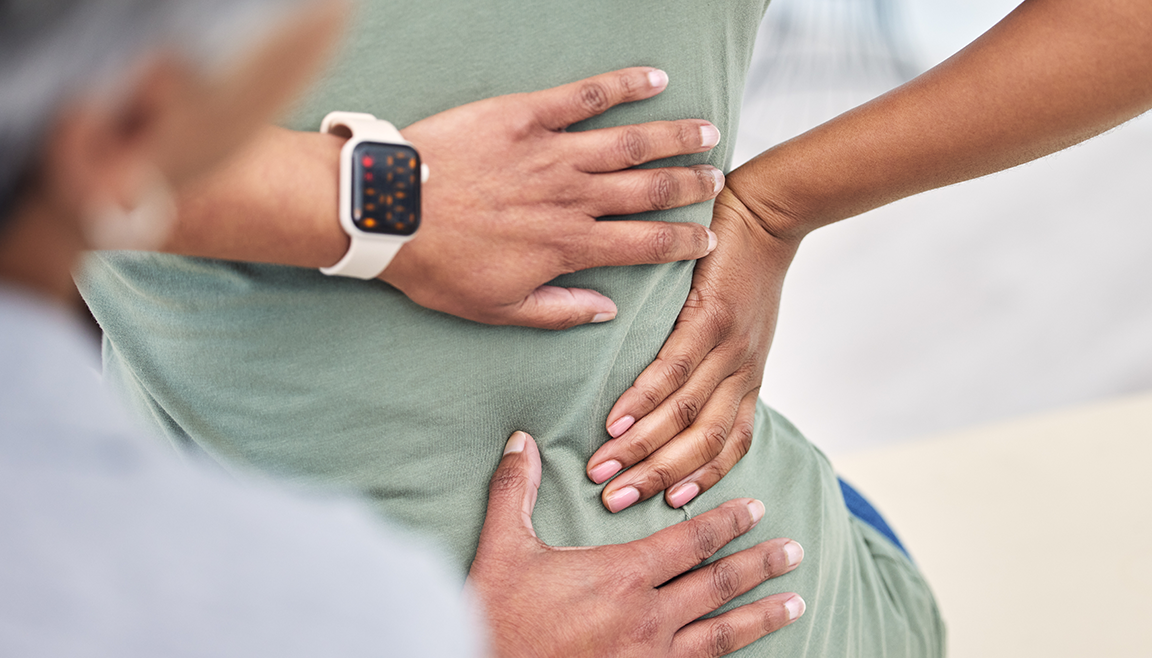Lower back pain is a common complaint that affects millions of people daily. While it’s often assumed that this pain originates solely from the lower back itself, other muscles and areas of the body can play a significant role in its development. Recognizing these connections and seeking proper diagnosis from an experienced chiropractor is essential for long-term relief and rehabilitation.
Muscles and Areas That Impact Lower Back Pain
Hip Flexors (Iliopsoas Muscle Group)
The iliopsoas muscles, which connect the spine to the thigh bone, can cause lower back pain when tight or overused. These muscles are often shortened due to prolonged sitting, creating tension that pulls on the lumbar spine. This strain can result in discomfort or pain in the lower back area.
Treatment & Rehab:
– Stretching the hip flexors regularly.
– Strengthening the gluteal muscles to balance tension in the hips.
– Chiropractic adjustments to align the pelvis and relieve pressure on the lower back.
Hamstrings
Tight hamstrings can pull on the pelvis and spine, leading to postural imbalances and increased pressure on the lower back. When hamstrings are overworked or inflexible, they limit mobility in the hips, which often leads to compensatory stress on the lower back muscles.
Treatment & Rehab:
– Regular hamstring stretches to improve flexibility.
– Incorporating strengthening exercises for the surrounding muscles like glutes and quadriceps.
– Chiropractic care to address any imbalances or alignment issues.
Gluteal Muscles
Weakness in the gluteal muscles, particularly the gluteus medius and maximus, can contribute to instability in the pelvis, which may cause strain on the lower back. The glutes play a crucial role in supporting the hips and lower back during movement, and weakness can result in improper movement patterns and pain.
Treatment & Rehab:
– Strengthening exercises like glute bridges, squats, and lunges.
– Chiropractic adjustments to restore proper pelvic alignment.
– Soft tissue therapy to relieve any tension in surrounding muscles.
Abdominal Muscles
The core muscles, including the abdominals, provide stability to the spine and pelvis. Weak or inactive abdominal muscles can result in poor posture, forcing the lower back to compensate for the lack of support. This can lead to chronic pain and discomfort.
Treatment & Rehab
– Core-strengthening exercises like planks and pelvic tilts.
– Chiropractic assessment of spinal alignment.
– Posture correction exercises to reduce strain on the lower back.
Piriformis Muscle
The piriformis is a small muscle located deep in the buttock, near the sciatic nerve. When this muscle becomes tight or inflamed, it can irritate the sciatic nerve, leading to a condition known as piriformis syndrome, which causes pain in the lower back, buttocks, and down the leg.
Treatment & Rehab
– Stretching exercises targeting the piriformis.
– Myofascial release and massage therapy.
– Chiropractic adjustments to alleviate nerve pressure and improve hip mobility.
Quadratus Lumborum (QL)
The QL muscle is located in the lower back and helps stabilize the spine. When it becomes tight or overworked, it can cause localized pain and contribute to lower back discomfort. This muscle is often affected by poor posture, prolonged sitting, or improper lifting techniques.
Treatment & Rehab
– Stretching exercises targeting the QL.
– Strengthening core and back muscles to reduce strain.
– Chiropractic adjustments to correct spinal misalignments and improve posture.
Why You Need an Experienced Chiropractor for Diagnosis
While many people attempt to self-diagnose and treat lower back pain, it’s crucial to understand that pain in this region is often multifaceted. A reputable chiropractor can identify the root cause of the pain and provide a tailored treatment plan that addresses the contributing factors, such as muscle imbalances or misalignments.
An experienced chiropractor will conduct a thorough examination, which may include:
– A physical assessment of the spine, pelvis, and surrounding muscles.
– Diagnostic imaging, such as X-rays, to identify structural issues.
– Evaluating posture and movement patterns to uncover contributing factors.
With a proper diagnosis, the chiropractor can offer a combination of treatments, including spinal adjustments, soft tissue therapy, and rehabilitative exercises, that not only alleviate pain but also prevent future issues.
Lower back pain is often influenced by multiple muscles and areas of the body, not just the spine itself. To achieve lasting relief, it’s important to address all contributing factors with the guidance of an experienced chiropractor. If you’re struggling with lower back pain, don’t wait. Schedule a consultation with a reputable chiropractor to receive a comprehensive diagnosis and personalized treatment plan.
If you’re battling lower back pain, it’s time to explore chiropractic care for effective, drug-free relief. At Chiropractic Physicians, we specialize in providing comprehensive chiropractic treatments to help you heal and recover without resorting to medication or surgery. With convenient locations in Burien, Kent, Federal Way, and Tacoma, our team is ready to support your journey to a pain-free life. Schedule your appointment today at Chiropractic Physicians and take the first step toward lasting relief.

